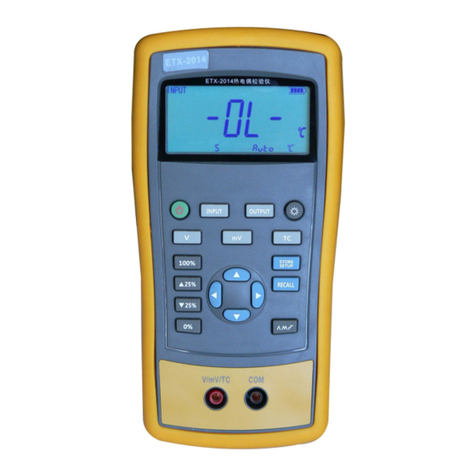
Contents
1 Installation......................................................................................................错误!未定义书签。
2 Description....................................................................................................................................... 2
2.1 General Technical Specifications........................................................错误!未定义书签。
3 Quick Reference............................................................................................................................ 4
3.1 Front Panel............................................................................................................................ 5
3.2 Introduction of Keys........................................................................... 错误!未定义书签。
3.2.1 Power On/Off Key..................................................................................................... 5
3.2.2 Direction Key...........................................................................错误!未定义书签。
3.2.3 Basic Function Keys.................................................................................................. 5
3.3 Introduction of Rear Panel...............................................................错误!未定义书签。
3.4 User Interface......................................................................................错误!未定义书签。
3.4.1 Interface of Measurement Display..........................................................................7
3.4.2 Interface of Measurement Setting........................................ 错误!未定义书签。
3.4.3 Interface of List Scanning....................................................................................... 8
3.4.4 Interface of System Setting...................................................错误!未定义书签。
4 Basic Function Operation.............................................................................. 错误!未定义书签。
4.1 Startup & Shutdown.............................................................................................................. 9
4.2 Parameter Selection...............................................................................................................9
4.2.1 Frequency Selection................................................................................................... 9
4.2.2 Level Selection.........................................................................................................10
4.2.3 Offsets Selection .................................................................... 错误!未定义书签。
4.2.4 Range Selection....................................................................... 错误!未定义书签。
4.2.5 Output Impedance Selection.................................................................................... 11
4.2.6 Measurement Display Speed Selection................................... 错误!未定义书签。
4.2.7 Main Parameter Selection........................................................错误!未定义书签。
4.2.8 Secondary Parameter Selection............................................... 错误!未定义书签。
4.2.9 Equivalent Mode Selection...................................................错误!未定义书签。
4.2.10Comparator Setting................................................................................................. 12
4.2.11 List Scanning Function.......................................................... 错误!未定义书签。
4.2.12 DCR MODE.......................................................................... 错误!未定义书签。
4.2.13 Electrolytic Capacitor Mode..................................................错误!未定义书签。
4.2.14 Relative Function...................................................................错误!未定义书签。
4.2.15 Data Retention Function........................................................错误!未定义书签。
4.2.16 Data Recording Function (Maximum Value, Minimum Value, Average Value)错误!未定义书签。
4.2.17Correction Function................................................................ 错误!未定义书签。
4.2.18 Backlight Brightness Setting..................................................................................17
4.2.19 Power-on Parameter Setting.................................................. 错误!未定义书签。
4.2.20 Buzzer Switch Setting............................................................错误!未定义书签。
5 Basic Performance Indicators........................................................................ 错误!未定义书签。
5.1 Measurement Parameter..................................................................... 错误!未定义书签。
5.2 Equivalent Mode.................................................................................错误!未定义书签。
5.3 Basic Accuracy.................................................................................................................... 19
5.4 DCR MEASUREMENT ACCURACY..............................................错误!未定义书签。
5.5 Test Signal Frequency.........................................................................错误!未定义书签。
5.6 Test Signal Level................................................................................................................. 22
5.7 Output Impedance............................................................................................................... 22
5.8 Measurement Display Range.............................................................................................. 23
6 External Interface Instructions.......................................................................错误!未定义书签。
6.1 USB INTERFACE.............................................................................................................. 23
6.2 RS232INTERFACE............................................................................................................. 23
7 SCPI COMMAND REFERENCE.................................................................错误!未定义书签。
8 Precautions and Warranty.............................................................................. 错误!未定义书签。

































